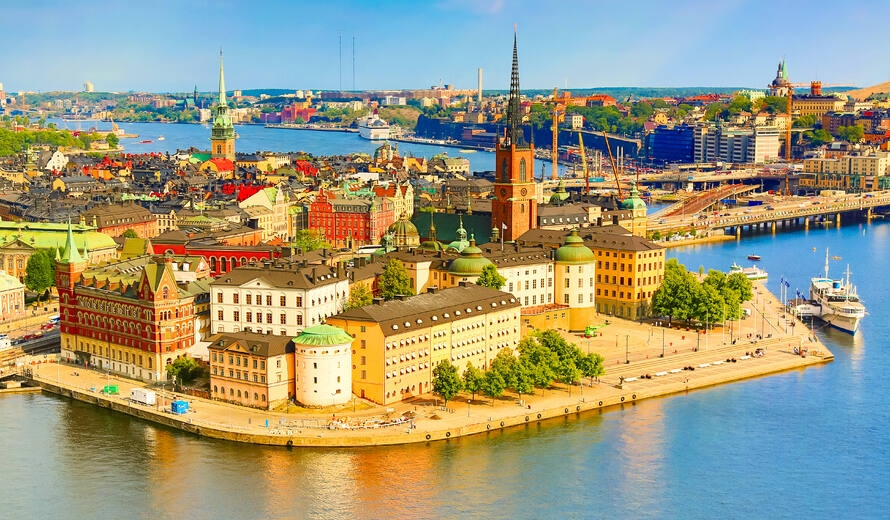| Stockholm+50 reflects on milestones in conservation of nature’s treasures |
| PublishDate:2022-06-06 Hits:3389 |
© Shutterstock / Nick NA
As we celebrate 50 years of global environmental action for the anniversary of the 1972 United Nations Conference on the Human Environment, a side-event commemorated the birth and achievements of four key biodiversity-related Conventions adopted in the 1970s: the Ramsar Convention, the World Heritage Convention, CITES and the Convention on Migratory Species. Conservation of species and ecosystems is key to a healthy planet and livelihoods. By showcasing concrete examples of cases where the Conventions have worked successfully together, an event organised at the UN Stockholm+50 meeting allowed the Parties to the four multilateral agreements to reflect on the milestones achieved and future opportunities to increase effectiveness.The Party representatives, including from the United Kingdom, Switzerland, Botswana, Uzbekistan, Venezuela, Czechia and Norway, underlined the benefits of multilateralism in addressing nature loss. The Conventions offer global standards and access to capacities, financial resources and partnerships but we also need to empower communities and involve the private sector, the Ministerial panel noted.
The panelists further stressed the importance of restoring and protecting nature as an asset for sustainable development and climate action. “The goals for climate, human development and pandemic recovery can only be met if objectives to protect nature are met.”
“A lot has been achieved since Stockholm, but trends in nature are alarming. Work done by these organisations and others to protect and restore nature is absolutely essential. Nature delivers for everything we depend on, the economy, human wellbeing, and it is the most cost-effective way to respond to climate change,” said Lord Goldsmith, the Minister for the Pacific and the International Environment (UK).
The Heads of the Conventions called for ambition to meet the conservation targets for species and sites, with enhanced cooperation among actors notably at the national level and the forthcoming post-2020 Global Biodiversity Framework serving as key mechanisms.
Ms Alyona Krivosheyeva of the Association for the Conservation of Biodiversity of Kazakhstan took the event participants on a journey to Saryarka – Steppe and Lakes of Northern Kazakhstan, a World Heritage site designated also under the Ramsar Convention. The site is home to the critically endangered Saiga, a migratory antelope protected both under CITES and CMS.
The 1972 United Nations Conference on the Human Environment was the first world conference to make the environment a major issue in the global arena. It significantly influenced the early days of the Convention on Wetlands of International Importance especially as Waterfowl Habitat (Ramsar) and UNESCO’s Man and the Biosphere Programme, both adopted in 1971 and regarded as pioneers for global site networks.
The UN Conference was also an important catalyst to drafting of the Convention concerning the Protection of the World Cultural and Natural Heritage, adopted by UNESCO General Conference in 1972, the 1973 Convention on International Trade in Endangered Species of Wild Fauna and Flora (CITES) and the Convention on the Conservation of Migratory Species of Wild Animals (CMS) signed in 1979.
The Stockholm+50 coincides with the 50th anniversary of the World Heritage Convention.
Learn more about UNESCO's participation at Stockholm+50:
|
- News | UNESCO’s “World Heritage and Sustainable Tourism Programme” Phase II China Pilot Studies - Yellow (Bohai) Sea Migratory Bird Habitat Phase I Training Course Successfully Held
- WHITRAP's Side Event Adopted by the 46th Session of WH Committee
- Publication | WHITRAP Newsletter No. 62
- News | HeritAP Chat: 2024 World Heritage Contribution to Sustainable Development Goals Successfully Held
- SEAMEO SPAFA-WHITRAP Training Workshop on Heritage Impact Assessment held in Melaka
- Call for Application | 2024 Global Awards for World Heritage Education Innovative Cases(AWHEIC) Promoting what people do and how they do it
Copyright © 2009-2012 World Heritage Institute of Training and Research-Asia and Pacific (shanghai)



